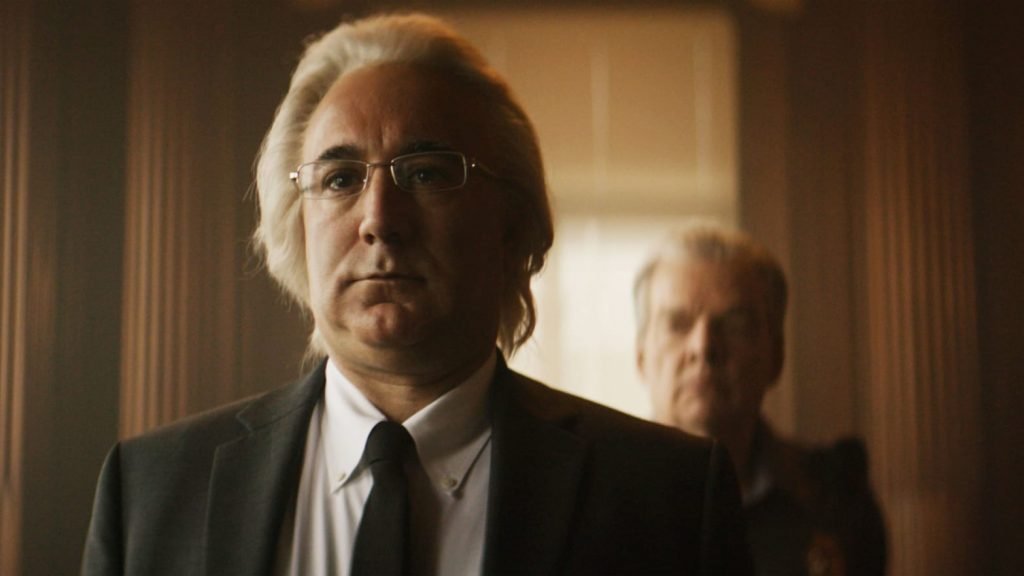Madoff: The Monster of Wall Street (2023) Netflix Docuseries Explained: The year is 2008, and the world is unraveling under one of the most serious financial crises globally since the Great Depression of the 1920s, with Lehman Brothers filing for bankruptcy. This is also the year that Bernie Madoff, former chairman of NASDAQ and a critical figure in the United States’ financial securities trading and investment business, is arrested for perpetrating fraud in what turned out to be one of history’s biggest Ponzi schemes.
The Netflix limited documentary series ‘Madoff: The Monster of Wall Street’ delves into the history of Bernie Madoff and how he managed to pull off this significant crime right beneath the nose of the ever vigilant United States regulatory authority – the SEC (Securities Exchange Commission).
This Netflix series is certainly not the only one trying to tell the story of this financial whiz whose magic turned out to be a trickster. This story has been the subject of many a book and documentary, the inspiration for Woody Allen’s ‘Blue Jasmine’ and even an Emmy-award nominated television biopic starring Robert De Niro and Michelle Pfeiffer (‘The Wizard of Lies’).
This article will break down the offerings of this 4-episode documentary series on the life and crimes of Bernie Madoff.
Madoff: The Monster of Wall Street Docuseries Plot & Synopsis:
The story begins with an over-dramatic proclamation of the monster that is this man – literally echoing the title. Here is a wolf in sheep’s clothing – the very image of a modern, successful American man who has turned out to be everyone’s nightmare.
Episode one focuses on the early years of Madoff’s life – his immigrant roots, his early tendency to buy people’s time with money, and his family’s involvement in his business. It also outlines the history of the times he was living in – a time of war and poverty followed by a need for stability and the pursuit of the American dream. This is an important context setting for understanding the hopes, aspirations, and motivations of the people at the time, which are crucial to explaining Madoff’s burgeoning success in the industry.
The episode also explains the history behind Madoff’s father-in-law’s accounting firm and the two people who took it over in the 70s – Avellino & Bienes. Avellino & Bienes continued to participate in Madoff’s scheme and were eventually exposed in the 90s through an investigation by the SEC. When they agreed to pay off their debtors, the matter was put to rest there, and Madoff remained untouched.
This episode is as much about building the image of Madoff as much as it is about how Madoff built his own formidable presence.
Episode two begins at the Lipstick Building – an impressive 453-foot skyscraper where Madoff rented space for his operations. The narrative begins to peel back the stinky onion that is the Ponzi scheme being run by Madoff in the dingy 17th floor of the otherwise swanky workspace. It details how the fraud was actually perpetrated – with investments coming and fake trades being placed, printed, and sent to the customers as a great return on their investment.
Bernie Madoff runs a tight ship here, not allowing even his sons to trespass the floor. He entrusts a few associates with running the day-to-day operations of the fraud. Through the episode, we see how this operation is actually put into practice and who are the key players in moving it forward, including four key clients who invest with Madoff. Word of mouth is how this business grows and is kept in the shadows, away from the public. Whoever attempts to do due diligence on the nature of these operations is promptly asked to take their business elsewhere – which silences further questions. Towards the end of the episode, we begin to see the chinks appear in the armor of this business when a reporter publishes a story on why this successful operation appears dubious, considering that every other manager was making losses because of the dot com bubble burst.
If you’ve been wondering how Madoff was able to maintain such an operation so quietly and away from SEC scrutiny, episode three begins to explain his power and how he managed to keep his unregistered business quiet by insisting that his investors never reveal his name under any circumstances – if they did, they would be faced with the consequence of being dropped as his client. The episode is set in the early 2000s, detailing how Madoff’s legitimate business began to get insolvent and how funds from the illegitimate wing were being funneled into the legitimate business as investments. It was all part of the effort to make Madoff and his business look spotless and incomparable. But SEC audits soon begin to haunt his footsteps in the wake of expositions of similar frauds. To add to his worries, investors begin pulling out of investments, demanding redemption of their accounts. The only hitch? He is down to his last $13 million, whereas the redemptions requested were close to $100 million. But he is bailed out by his co-conspirator Picower.
The red flags began to accumulate, and eventually, people began to piece together that what Madoff was running was mathematically impossible given the kind of returns he was making and, therefore, merited a full investigation by the SEC.
By the end of the episode, Madoff has made a bold-faced move, walking into the offices of the SEC alone and handing them the information they need to take him down – account information, clearing house information, trading bank names. Yet, the impending fall from grace fails to come through as the SEC fails its job. The only action that was taken against Madoff was to get him to register his investment advisory firm, which only further legitimized his fraud.
Pride comes before a fall, which is what the series’ final episode opens with when they showcase Madoff’s growing boldness about getting away with his crimes. 2007-08 saw the economic crisis, which ultimately became the turning point that led to Madoff’s conviction and sentencing for his crimes. The episode largely deals with the emotions of the victims of Madoff, his conviction and sentencing, and the impact of this fallout on his family and his co-conspirators. A whopping $19 billion was lost by big and small investors – right from the owners of the New York Mets to the aged persons with little money living in their retirement homes in Florida. The episode concludes the documentary by telling us what befell everyone who trusted in Madoff and that Madoff exhibited grief about what happened to his family but only because he knew that now he had lost their admiration.
What was Madoff’s Modus Operandi?
For the viewer who does not have an in-depth understanding of how the securities market functions, this can be a challenging and dense watch. As is wont for a documentary, the episodes explain the crime that was committed, the monumental nature of it, and its impact on the world through the eyes of journalists, biographers, G-men, and close associates and also uses recorded depositions of Bernie Madoff.
The Ponzi Scheme is named after the Italian businessman who perpetrated fraud by luring new investors to give him funds that he used to pay off former investors while maintaining the illusion of running a profitable business. But Madoff’s methods differed in that they were based on a legitimate business operation that helped his fraud remain undetected for a long time as opposed to the original Ponzi scheme, which was based on fictitious companies.
Why is Madoff so culturally significant?
Each episode attempts to carefully construct an explanation of Madoff’s personality and his motivations for keeping this show running. Directed by documentary filmmaker Joe Berligner, the series tries to lay out a critical understanding of the average American and their aspirations to be perceived as part of a higher clan, a richer group, and the economic system willing to let them reach for their goals.
Madoff is the very embodiment of these aspirations and his life has spanned the decades right from the time of depression and war up to the time of the plenty and the booming. He is representative of the cultural blind faith in American ideals and the power of the white man that even blinds the Government.
Yet, there is so little that the series offers in terms of the critical social commentary that is required to decode the mystery behind how such a trickster was allowed to thrive. Where the documentary fails is in its dense commentary, employing the use of difficult jargon and neglecting to let the audience emotionally connect to the story until the very last half hour of this 4-hour-long narrative. The reenactments appear excessive, and any layman’s explanation for this complex scheming remains wanting.
More than anything, the motivations and traits of Madoff still remain a relative mystery. There are explainers of simple greed being the biggest motive for such a huge crime but surely, for a documentary that equates him to a serial killer – isn’t there more that can be delved into?
Nevertheless, if you are a finance buff with a taste for documentaries, this particularly limited series on Netflix offers insights into the minds of the victims as well as the perpetrators of one of history’s biggest defrauding ventures. Although it might not be something you binge on, it might be something you can sit with, chew on, and comprehend faith, trust, and power in American society.





![Fever Dream [2021] Netflix Review – A mysterious eco-fable that doubles down as a metaphor for parental anxiety](https://79468c92.delivery.rocketcdn.me/wp-content/uploads/2021/10/Fever_Dream-Distancia-de-rescate-3-768x321.jpg)

